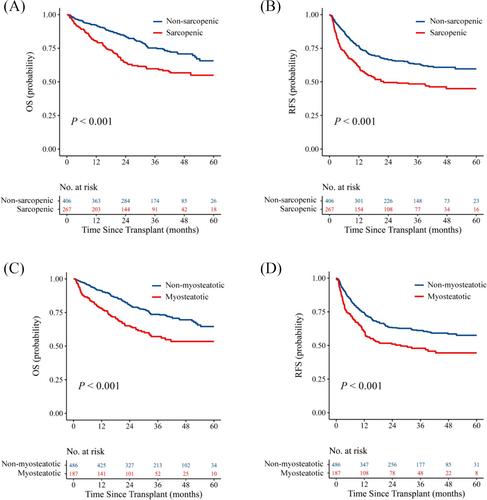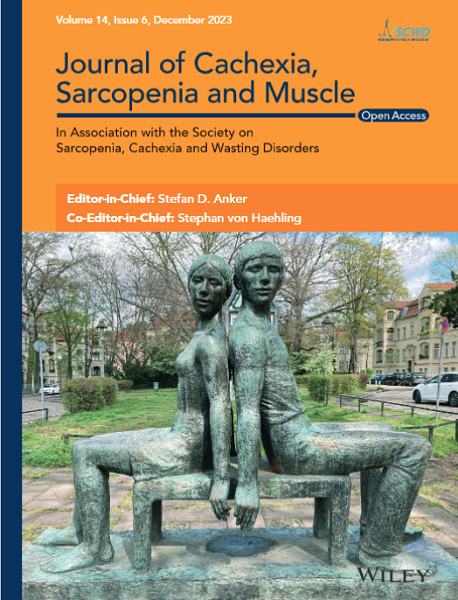Myosteatosis and muscle loss impact liver transplant outcomes in male patients with hepatocellular carcinoma
Abstract
Background
Sarcopenia is associated with unfavourable long-term survival in patients undergoing liver transplantation (LT) for hepatocellular carcinoma (HCC). However, the impact of myosteatosis and muscle loss on patient prognosis has not been investigated.
Methods
Seven hundred fifty-six HCC patients who received LT at 3 transplant centres were included. Computed tomography (CT) images of recipients were collected to measure skeletal muscle index (SMI) and skeletal muscle radiodensity (SMRA). The impact of myosteatosis on the prognosis of sarcopenic and non-sarcopenic patients was studied separately. Muscle status was evaluated based on the presence of sarcopenia and myosteatosis. The muscle loss of 342 males was calculated as the relative change of SMI between pre- and post-LT evaluations. Cox regression models were used to identify predictors of overall survival (OS) and recurrence-free survival (RFS).
Results
The study comprised 673 males and 83 females. The median follow-up time was 31 months (interquartile range, 19–43 months). Prior to LT, 267 (39.7%) and 187 (27.8%) males were defined as sarcopenic (low-SMI) and myosteatotic (low-SMRA), respectively. For sarcopenic recipients, the presence of myosteatosis was followed by a 23.6% decrease in 5 year OS (P < 0.001) and a 15.0% decrease in 5 year RFS (P = 0.014). Univariate and multivariate analyses revealed that muscle status was an independent predictor of OS [hazard ratio (HR), 1.569; 95% confidence interval (CI), 1.317–1.869; P < 0.001] and RFS (HR, 1.369; 95% CI, 1.182–1.586; P < 0.001). Postoperatively, a muscle loss >14.2% was an independent risk factor for poor OS (HR, 2.286; 95% CI, 1.358–3.849; P = 0.002) and RFS (HR, 2.219; 95% CI, 1.418–3.471; P < 0.001) in non-sarcopenic recipients (N = 209).
Conclusions
Pre-transplant myosteatosis aggravated the adverse impact of sarcopenia on liver transplant outcomes in male HCC patients. Post-transplant muscle loss might assist in prognostic stratification of recipients without pre-existing sarcopenia, intriguing new insights into individualized management.


 求助内容:
求助内容: 应助结果提醒方式:
应助结果提醒方式:


